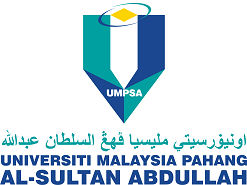Effects of injection moulding process parameters on impact strength of polypropylene-hydroxyapatite biocomposite
DOI:
https://doi.org/10.15282/jmes.11.2.2017.2.0236Keywords:
Polypropylene; hydroxyapatite; injection moulding; impact strength.Abstract
The present work investigates the impact strength of Polypropylene-Hydroxyapatite (PPHA) biocomposite for orthopaedic scaffold implants and tissue engineering applications. The effects of injection pressure and speed and cooling time on the impact strength of polypropylene (PP) – hydroxyapatite (HA) were studied for a wide range of process parameters using injection moulding machine. PP (100 wt%) was processed using injection moulding machine with optimal process settings. Later, PP (99 wt%) with HA (1wt%) was melt-mixed using a twin-screw compounding extruder followed by injection moulding process to prepare the impact test specimens with varying process parameters. The impact of strength test was conducted according to ASTM-D 256 standards on PP and PP-HA biocomposites. The fractured samples were studied for morphological properties using scanning electron microscope. The result shows that injection moulding parameters had a great influence on their impact strength and morphological properties. The best conditions to produce composites of optimum mechanical properties are injection pressure of 30 MPa, injection speed of 15 cc/s and cooling time of 20 s for PPHA biocomposite. It is known that characterising efficient solutions is an important way to realise the potential of an injection moulding operation. Besides that, by applying all various parameters, we are most definitely able to reduce the time of a real-time injection moulding operation and produce a better quality product.
References
Lee TS, W.A.W.A. Rahman, A.R. Rahmat, Tiam TT, Soo TB, Low CY. Computer aided injection moulding process analysis of polyvinyl alcohol–starch green biodegradable polymer compound. Journal of Manufacturing Processes. 2012;14:8-19.
Erfan O, Behzad SH, Seyed MD, Mozhgan B, Saeed D, Iman H, et al. Warpage and shrinkage optimization of injection-molded plastic spoon parts for biodegradable polymers using taguchi, ANOVA and artificial neural network methods. Journal of Materials Science & Technology. 2016;32:710-20.
Ries Rue L, Cuhna Antonio M, Oliveira Maria J, Compos Ana R, Bevis MJ. Relationship between processing and mechanical properties of injection molded high molecular mass polyethylene+ hydroxyapatite composites. Materials Research Innovations. 2001;4:263-72.
Homaeigohar SSh, Yari Sadi A, Javadpour J, Khavandi A. The effect of reinforcement volume fraction and particle size on the mechanical properties of β-tricalcium phosphate–high density polyethylene composites. J Eur Ceram Soc. 2006;26:273-8.
Fang LM, Gao P, Leng Y. High strength and bioactive hydroxyapatite nano-particles reinforced ultrahigh molecular weight polyethylene. Compos Pt B. 2007;38:345-51.
Fang LM, Leng Y, Gao P. Processing and mechanical properties of HA/UHMWPE nanocomposites. Biomaterials. 2006;27:3701-7.
Campbell, GA, Campbell SE, Bullwinkel M, Savoka J, Ragona L, et al. Effect of oil additives and injection molding process parameters on the tensile and impact energy of polypropylene. Proceedings, 59th Annual Technical Conference of the Society of Plastics Engineers2001. p. 466-70.
Jie Z, Joseph CC, E. Daniel K. Tensile Strength and Optimization of Injection Molding Processing Parameters Using the Taguchi Method. Spring. 2004;4:2.
Alvarez V, Vazquez A, Bernal C. Effect of microstructure on the tensile and fracture properties of sisal fiber/starch-based composites. Journal of Composite Materials 2006;40(1):21–35..
Wang M, Deb S, Bonfield W. Chemically coupled hydroxyapatite-polyethylene composites: processing and characterisation. Mater Lett. 2000;44:119-24.
Bonner M, Ward M, McGregor W, Tanner KE, Bonfield W. HA/PP composite: a novel bone substitute material. J Mater Sci Lett. 2001;20:2049-51.
Cunha AM, Reis RL, Ferreira FG, Granja PL. The Influence of Processing Conditions on the Mechanical Behaviour of UHMWPE/HA and PMMA/HA Composites. Kluwer Academic Publishers; 1995. p. 163-76.
Unwin AP, Ward IM, Ukleja P, Weng J. The role of pressure annealing in improving the stiffness of polyethylene/hydroxyapatite composites. Journal of Materials Science. 2001;36:3165-77.
Tjong SC, Xu SA, Mai YW. Impact fracture toughness of short glass fiber-reinforced polyamide 6, 6 hybrid composites containing elastomer particles using essential work of fracture concept. Materials Science and Engineering: A. 2003;347:338-45.
Ramsteiner F, Theysohn R. Tensile and impact strengths of unidirectional, short fibre-reinforced thermoplastics. Composites. 1979;10:111-9.
Rajendran M, Manjusri M, Fantanhun D, Amar KM. Influence of processing parameters on the impact strength of biocomposites: A statistical approach. Composites Part A: Applied Science and Manufacturing. 2016;83:120-9.
Saheb DN, Jog JP. Natural fiber polymer composites: a review. Advances in Polymer Technology. 1999;18:351-63.
Downloads
Published
Issue
Section
License
Copyright (c) 2017 The Author(s)

This work is licensed under a Creative Commons Attribution 4.0 International License.





